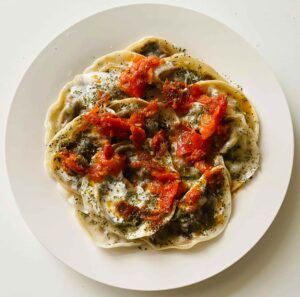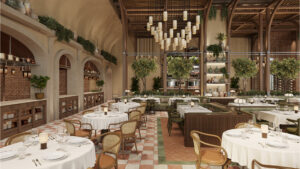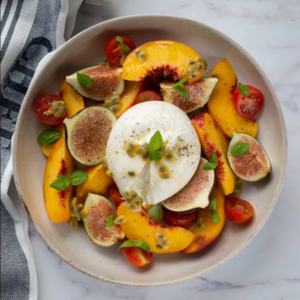Italy is known for its beautiful landscapes and rich history, but for many, its greatest treasure is the food. From north to south, every region brings something unique to the table. Meals in Italy are not just meals, they’re daily celebrations of flavor, family, and heritage.
If you’re a food lover curious about Italian cuisine culture, this guide will give you a deeper understanding of the customs, values, and traditions that shape the way Italians eat, cook, and live.
The Connection Between Food and Italian Culture
To understand Italian food culture, you first need to understand Italian culture as a whole. Italians don’t just eat, they celebrate every meal. It’s a chance to pause, connect, and share time with loved ones. Eating is not something you do on the go. It’s something you do together, at a table, with real plates, real conversation, and a deep respect for what’s being served.
In many ways, food is at the center of Italian culture and traditions. It’s part of birthdays, weddings, religious holidays, and even casual Sunday lunches. Family gatherings are planned around what’s being cooked. Recipes are passed down from grandparents to grandchildren. And whether it’s a fancy dinner or a simple bowl of pasta, the focus is always on quality, taste, and tradition.
Why Italians Still Enjoy Full-Course Meals?
One of the most important parts of Italian food culture is the structure of meals. Unlike in many other places, meals in Italy are often slow and follow a set rhythm, even on an average day.
Lunch and dinner typically include multiple courses. You might start with antipasto (a starter like cured meats or bruschetta), followed by a primo (first course, usually pasta or risotto), then a secondo (main course with meat or fish), and finally dolce (dessert). Of course, you don’t have to eat all of these at every meal, but the structure reflects the care that goes into dining.
Food is rarely rushed. In fact, many Italians take a long lunch break in the middle of the day. It’s not uncommon for meals to last one or two hours, especially on weekends or holidays. That’s because food is not only fuel, it’s a way to enjoy life.
Why Simple Ingredients Matter Most in Italian Cooking?
When people talk about Italian cuisine culture, they often mention how good the food tastes, and one big reason is the simplicity. Italian cooking focuses on using fresh, seasonal ingredients and letting those ingredients shine. Dishes are often made with just a few components, but they’re chosen and prepared with care.
Tomatoes, olive oil, garlic, basil, fresh bread, and cheese form the base of many Italian dishes. But it’s how they’re used that makes the difference. Rather than covering food in heavy sauces or long lists of spices, Italian cooking brings out the natural flavor of each ingredient.
From hand-stretched pizza dough to homemade pasta, there’s a strong connection to traditional techniques and a love for doing things the right way. This attention to detail is one of the reasons why even a simple plate of spaghetti with tomato sauce can taste like a five-star meal.
Regional Differences in Italian Food Culture
Italy may be one country, but its food varies widely from region to region. Northern Italy is known for rich, buttery dishes and creamy sauces, while southern Italy favors olive oil, tomatoes, and fresh vegetables. Each area has its own version of pasta, its own sauces, and its own traditional recipes.
For example, in Naples, pizza is the pride of the city, with soft, chewy dough and simple toppings. In Bologna, the famous ragù meat sauce (often called Bolognese) is slow-cooked for hours and served with wide pasta like tagliatelle. In Sicily, you’ll find lots of seafood, sweet pastries like cannoli, and Arab-influenced spices.
This variety is what makes Italian food culture so fascinating. Even within the same country, two cities just a few hours apart might prepare the same dish in completely different ways, and each version will be proudly defended by the locals!
How Food Brings Italian Families Together?
One of the most touching parts of Italian culture and traditions is how strongly food is tied to family. Sunday lunch, in particular, is a big event in many households. Families gather for hours, enjoying course after course, telling stories, and simply spending time together.
It’s not unusual for multiple generations to cook together in the kitchen. Grandparents teach their grandchildren how to make pasta by hand or roll dough just the right way for pizza. These small moments carry big meaning; they keep family close and ensure that recipes and traditions are never lost.
Even outside of the family home, food plays a role in making people feel like they belong. Sitting down for a meal in Italy, even as a visitor, often feels like joining something special, a quiet kind of celebration of life’s simple joys.
What to Know About Italian Mealtime Etiquette?
To truly appreciate Italian food culture, it’s helpful to know a bit about mealtime etiquette. For instance, Italians rarely put cheese on seafood dishes. That might sound strange, but it’s a widely respected rule in Italian cuisine culture, based on flavor balance.
Bread is usually served with meals, but it’s not meant to be eaten with butter. Instead, it’s used to scoop up leftover sauce from your plate. And drinks? Wine or water is the most common choice during meals. Sodas are less popular at the table, especially during dinner.
Italians also tend to eat later than people in other countries. Dinner usually starts around 8 PM or later. And while tipping isn’t required, it’s appreciated, especially for excellent service.
Food as a Way of Life In Italy
In Italy, food isn’t just about hunger or nutrition; it’s a full experience that touches every part of life. From the fresh produce in the markets to the smell of espresso in the morning, food is everywhere and always meaningful.
Even during national celebrations and holidays, food takes center stage. Christmas, Easter, and weddings all have their own special Italian menus and dishes. In many ways, food is how Italians mark time, express love, and stay connected to their roots.
So, when we talk about Italian food culture, we’re talking about more than just what’s on the plate. We’re talking about a way of life, one that honors tradition, family, flavor, and the art of enjoying every meal.
Conclusion
Italian food culture is not about fancy meals or complicated recipes. It’s about connection, to the land, to the people, and to the moment. Whether you’re enjoying a long family lunch, tasting pasta made from scratch, or just having a coffee at a sidewalk café, you’re taking part in a rich and beautiful tradition.
For anyone who loves food and values authenticity, learning about Italian cuisine culture is both inspiring and deeply satisfying. It reminds us that food can be more than just something we eat; it can be something we remember.If you’re looking to experience this warmth and tradition right here in the city, Mama Bella brings the soul of Italy to your table. From rustic pasta dishes to homemade desserts, every bite tells a story. To book a table or learn more, contact +999 999 99 99 or email contact@mamabella.co. A true taste of Italy awaits.
Frequently Asked Questions
What time do Italians usually eat their meals?
Italians typically eat lunch around 1 PM and dinner after 8 PM. Meals are rarely rushed and can last over an hour, especially on weekends. It’s a time to relax, socialize, and enjoy the experience.
Do Italians eat pasta every day?
Not necessarily, but pasta is a common part of the weekly diet. Many families enjoy it several times a week in small portions. It’s often part of the first course and paired with simple, fresh sauces.
How do Italians view fast food?
Fast food is not a big part of Italian culture. Italians prefer slow, home-cooked meals made from fresh ingredients. That said, younger generations may enjoy it occasionally, but traditional dining still plays the main role.
Is breakfast important in Italian food culture?
Breakfast in Italy is usually light, a coffee and a pastry or toast. Unlike lunch or dinner, it’s quick and simple. It’s not a major social meal, but it still follows the Italian principle of quality over quantity.
How do Italians handle food waste?
Italians are very mindful of food waste. Leftovers are often reused in creative ways, and many traditional recipes were born from the need to use up extra ingredients. This reflects the respect Italians have for food and tradition.






